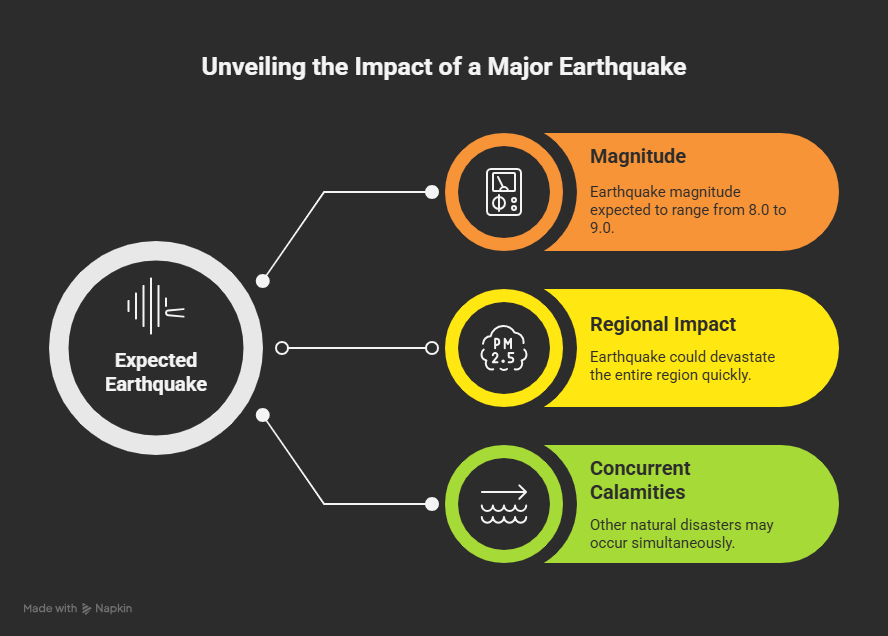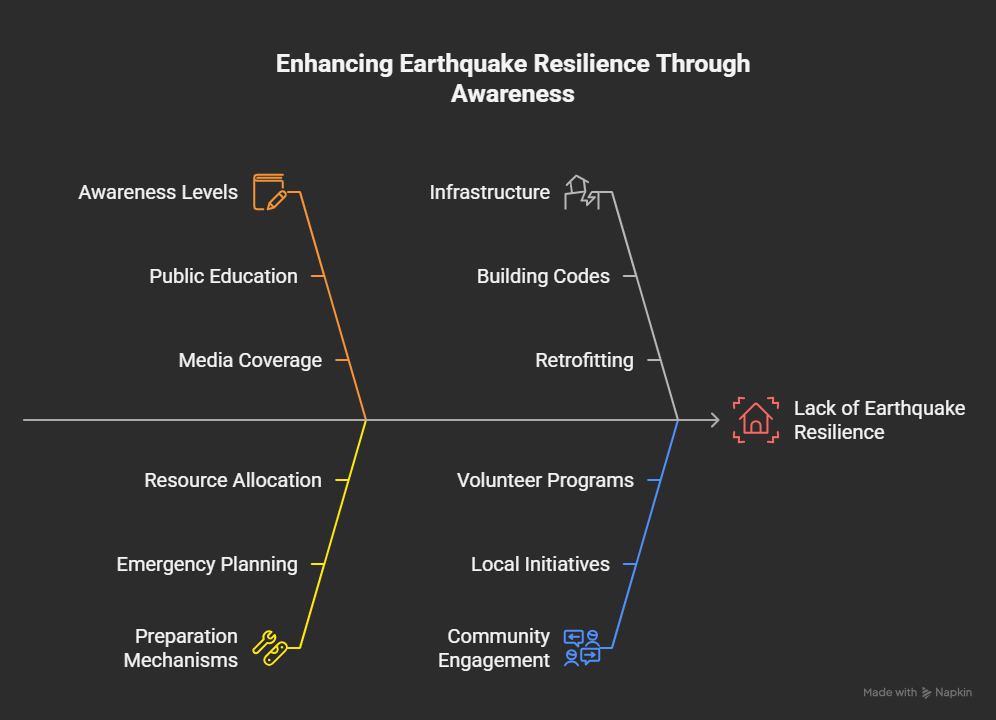Mountains are some of the most stable and fixed objects in the entire world. However, their large scale and size can be deceiving to the normal eye. The Himalayas, which are the crown jewel of the mountain ranges, sit on one of the world’s most dangerous seismic zones. It’s like a ticking bomb waiting patiently to strike and wreak havoc on the region. Meanwhile, the majority of the native people, states, and countries are unaware of it. So, when will the great Himalayan earthquake strike, and why is it necessary to discuss it to ensure the safety of the entire region?
The Geological Foundations of Himalayan Earthquakes
The formation of the whole Himalayan range is one of the most remarkable outcomes of the seismic activity. It was formed when the Indian plate collided with the Eurasian plate 40 million years ago. As a result, three main fault lines are observable in the region. And this is the tectonic setting of the region, which has the potential for a massive earthquake
- Main Central Thrust (MCT).
- Main Boundary Thrust (MBT)
- The Main Frontal Thrust (MFT).
Over time, the strain builds up in the region. Most of this takes place underground, and no one has a clue about it. However, there is a threshold to the strain, and it eventually gets out in the form of a region. This scale of energy is so massive that it could be disastrous for the entire area in the form of a giant quake—seismic time bomb.
Historical Earthquakes in the Himalayan Region
Over centuries, the entire region has witnessed several disastrous earthquakes. All this is the outcome of the active seismic activity of the plates below the Himalayan range. However, with each quake, scientists gain new insights into the fault system’s nature, which can aid in developing predictive models.
- 1505 earthquake (central Himalayas)
- 1934 Bihar–Nepal earthquake
- 1905 Kangra Earthquake
- 1950 Assam–Tibet earthquake
- 2005 Kashmir earthquake
- 2015 Nepal earthquake
The prior information is the reason that many experts warn about the possibility of another megaquake. And the recurrence gap could be the reason for the most significant strike shortly, tearing the entire region to pieces.
The Prediction and Analysis of the Great Himalayan Earthquake
All over the world, seismologists are closely monitoring the strain accumulation in the region. This helps them to understand the natural disaster more briefly and further tackle the challenges. Some data suggests that the expected earthquake could range from 8.0 to 9.0 magnitude on the Richter scale. This is sufficient to lay dust on the entire region within a few minutes; meanwhile, other natural calamities are alongside it.

Potential Impact on South Asia
The great Himalayan earthquake can impact major cities with a population of one million in India, Nepal, Bhutan, Pakistan, and Bangladesh. This is detrimental to human life, infrastructure, and the economy. Given the current level of preparation and resilience, it’s reasonable to assume that millions of lives are at stake. Moreover, the area is particularly vulnerable to further damage due to its unplanned infrastructure and non-compliance with modern safety protocols.
- Billions in damages.
- Long-term setbacks.
- Human cost.
- Casualties,
- Displacement.
- Healthcare emergencies.
The Himalayan Megathrust and Climate Change
Climate change is already a potential threat to human survival and the depletion of living conditions. But does it have any relation to earthquakes? Yes, indirectly, climate change can pose secondary hazards after an earthquake. This can result in a range of problems, further exacerbating the destruction caused by a megaquake.
- Glacial melt.
- Landslides.
- Floodings.
Are We Ready for the Great Himalayan Earthquake
No one hopes for a disaster, and the least we could do is prepare. Then, too, we’re mostly at the mercy of nature. Given the failing infrastructure in India and Nepal, it’s clear that no one is ready. Most of the population is unaware of the dangers lurking beneath the Earth’s surface. That’s why the area needs more awareness and early warning systems to save lives in the event of a disaster.
- More awareness.
- Better urban planning.
- Emergency response and disaster management.
- Proper codes and regulations.
Lessons from the Prior Earthquakes
The key takeaway from the previous natural disaster, an earthquake, is our inability to predict earthquakes. Moreover, with the rise of geopolitical tensions between nations, we need to stay together and help each other. Lastly, the rebuilding procedure takes time, and it’s all about contributing to those in need rather than blaming the authorities.
- Bad response.
- Need for international aid.
- Relocation should be rapid.
Societal Awareness and Policy Imperatives
Education and awareness are the primary goals of this article. The more helpful information reaches the people of the region, the more prepared they will be. At the same time, the local authorities should also invest in resources that contribute to welfare programs and disaster management. Then, people can only be prepared for the worst and hope for the best.
- Earthquake awareness
- Seminar in native.
- Community drills.
Living Near the Fault Zone
Millions of people reside near the fault zones. However, most are unaware of the scale of the probable earthquake. This is detrimental to the safety and survival of people, as it represents a form of ignorance that hinders progress in resilience. Therefore, awareness is a key mechanism that helps locals to develop mechanisms for better survival and preparation.

Final Thoughts on the Great Himalayan Earthquake
Natural disasters are unexpected and inevitable, and the same is the case with the possible Himalayan earthquake. Moreover, there’s no stopping it, as we lack the tools and technology to halt such a massive monstrosity. However, we can prepare for it and build an infrastructure that can respond to the disaster.
It all starts with educating and creating awareness among people about the probable catastrophe. At the same time, the authorities need to have proper rules and regulations regarding the construction of illegal infrastructure. Then only can we take the first crucial step against the natural calamity.
Finally, we might not defeat the quake, but that’s not the goal; our aim should be to survive and thrive in the chaos without loss of innocent lives.

